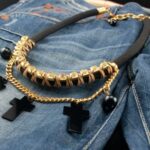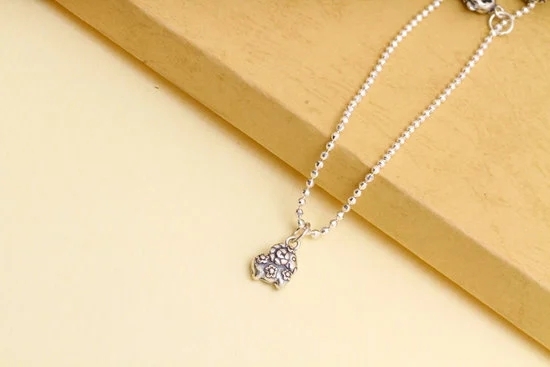Diamond cutting is an art that plays a crucial role in enhancing the brilliance and value of jewelry. The precision and expertise behind each cut can transform a rough diamond into a dazzling masterpiece. In this article, we will delve into the world of diamond cutting, exploring its various facets and techniques. Whether you are an aspiring jewelry designer or a diamond enthusiast, understanding the intricacies of diamond cutting can deepen your appreciation for these exquisite gemstones.
When it comes to diamond cuts, there are various styles that bring out the unique characteristics and radiance of each stone. From the classic round brilliant cut to more modern designs like princess, emerald, and marquise cuts, each style creates a distinct play of light within the gemstone. Learning about different cuts allows us to appreciate their individual beauty and choose the perfect design for our desired piece of jewelry.
Before embarking on the actual cutting process, certain preparations need to be made. Sorting and assessing the quality of diamonds is essential to determine their suitability for specific cuts. Selecting the right tools and equipment is equally important to ensure precision and accuracy during the cutting process.
Creating a controlled work environment minimizes any potential risks or errors that may occur along the way. By following these necessary steps before diamond cutting, we set ourselves up for success in crafting stunning jewelry pieces.
In this comprehensive guide, we will take you through every step of the diamond cutting journey – from selecting tools and equipment to troubleshooting common issues that may arise during the process. We will also explore advanced techniques that push the boundaries of conventional diamond cutting, allowing for intricate designs to come to life. By understanding how to assess the quality of diamond cuts, we empower ourselves as consumers or creators when purchasing or evaluating diamond-cut jewelry.
Join us as we dive into this captivating world where skilled craftsmanship meets exceptional beauty – where rough diamonds are transformed into sparkling works of art through precise and meticulous cuts. Discover how mastering this ancient art form can unlock the true brilliance and value of jewelry.
Understanding Diamond Cuts
Diamond cuts play a crucial role in enhancing the brilliance and beauty of jewelry. Each type of diamond cut has unique characteristics that affect the sparkle and overall appearance of the stone. In this section, we will briefly introduce some of the most popular diamond cuts and discuss their distinctive features.
- Round Brilliant Cut: The round brilliant cut is the most popular and widely recognized diamond shape. It consists of 58 facets, allowing for maximum light reflection and stunning brilliance. This classic cut showcases the diamond’s natural fire and sparkle, making it a timeless choice for engagement rings and other jewelry pieces.
- Princess Cut: The princess cut is a square or rectangular-shaped diamond with pointed corners. Known for its clean lines and modern appeal, this cut maximizes brilliance while maintaining a contemporary aesthetic. The princess cut suits various styles and settings, from solitaire rings to channel-set bands.
- Emerald Cut: The emerald cut features a rectangular shape with clipped corners and step-cut facets. This elegant cut emphasizes clarity over sparkle, showcasing the diamond’s natural beauty in a sophisticated manner. Often seen in engagement rings, emerald-cut diamonds exude an understated elegance that pairs well with both vintage and contemporary designs.
- Marquise Cut: The marquise cut is characterized by its elongated shape with pointed ends, resembling a boat or football shape. This unique cut maximizes carat weight while creating an illusion of lengthening fingers when set in rings. Marquise-cut diamonds are known for their dramatic sparkles and are often used as center stones or accents in various jewelry pieces.
These are just a few examples of diamond cuts available in the market today. When choosing a diamond for your jewelry piece, consider not only its shape but also factors such as personal style, desired aesthetics, and budget constraints. Each diamond cut offers its own distinct beauty, allowing you to find the perfect fit for your preferences.
Types of Diamond Cuts
- Round Brilliant Cut
- Princess Cut
- Emerald Cut
- Marquise Cut
By understanding the unique characteristics of each diamond cut, you can make an informed decision and create or choose jewelry that perfectly suits your taste and style. Remember, the right diamond cut can make all the difference in enhancing the brilliance and overall beauty of your jewelry piece.
Preparations Before Diamond Cutting
Sorting and Assessing the Quality of Diamonds
Before beginning the diamond cutting process, it is crucial to carefully sort and assess the quality of the diamonds. This ensures that only the best quality diamonds are selected for cutting, resulting in a more valuable and brilliant finished product.
To start, diamonds should be sorted by shape, size, color, and clarity. This helps to determine which diamonds are suitable for specific types of cuts and jewelry designs. It is important to note that each diamond cut has different ideal specifications in terms of color and clarity.
Once sorted, each diamond should be assessed for its individual characteristics. This includes examining its flaws, or inclusions, under magnification to determine their size and position within the stone. It is important to take note of any visible indicators that may affect the cutting process, such as internal fractures or surface cracks.
Selecting the Appropriate Tools and Equipment
Selecting the right tools and equipment is essential for a successful diamond cutting process. The choice of tools will depend on factors such as the type of cut being performed and personal preferences.
Key tools for diamond cutting include diamond saw blades, which are used to separate rough pieces from larger stones; diamond lapping discs, which help shape facets on a gemstone; wax dops, which hold stones securely during cutting; faceting machines, designed specifically for precision cuts; and precision measuring instruments such as gauges and calipers.
It is crucial to choose high-quality tools that are designed specifically for diamond cutting. Investing in reliable equipment will not only ensure better results but also improve safety during the cutting process.
Ensuring a Properly Controlled Work Environment
Creating a controlled work environment is vital in ensuring accurate and safe diamond cutting. Certain conditions need to be met to provide optimal results.
Firstly, proper lighting is necessary to accurately assess the facets during cutting and polishing. Natural daylight or bright, white lights are recommended to enhance visibility and minimize eye strain.
In addition, a clean and organized workspace is essential. This helps prevent contamination of the diamond during cutting and ensures that tools are readily accessible. Regular cleaning and maintenance of equipment is also necessary for continuous high-quality performance.
Lastly, maintaining a quiet and distraction-free environment is important to focus on the precision required during diamond cutting. Noise-canceling headphones or earplugs can be used if working in a noisy area.
By following these steps before beginning the diamond cutting process, jewelers can set themselves up for success in creating exquisite jewelry pieces that showcase the brilliance of diamonds.
Essential Tools and Equipment
Diamond cutting is a delicate and precise process that requires the use of various tools and equipment to achieve optimal results. In this section, we will provide an in-depth overview of the essential tools and equipment required for diamond cutting.
One of the most important tools in diamond cutting is the diamond saw blade. Diamond saw blades are specifically designed to cut through diamonds with precision and accuracy. These blades are typically made with industrial-grade diamonds embedded into a metal disc or rim.
The size and thickness of the blade can vary depending on the specific cutting needs. It is crucial to select the right type of diamond saw blade based on the hardness and size of the diamonds being cut.
Another essential tool in diamond cutting is the diamond lapping disc. Lapping discs are used for shaping and polishing the flat facets on diamonds. These discs are coated with a layer of diamond grit, which allows for precise shaping and smoothing of the diamond surfaces during the cutting process. Depending on the desired shape and finish, different grades of grit may be used.
Wax dops are a vital tool in holding diamonds securely during the cutting process. These small sticks or rods are typically made from materials such as wax or adhesive-backed paper. The diamond is attached to a dop using a heat source, such as a hot wax pen, which softens the wax and allows for a secure bond between the dop and diamond.
Faceting machines play a crucial role in achieving accurate cuts and angles on diamonds. These machines have various components that control rotation, speed, and motion while shaping different facets on diamonds. Faceting machines often come equipped with index gears, laps, protractors, scopes, transfer blocks, and other attachments that aid in precision cutting.
To measure and evaluate angles, proportion ratios, symmetry, and other critical factors in diamond cutting, precision measuring instruments are required. Instruments such as angle gauges, calipers, micrometers, magnifiers or loupes, and optical measuring devices like the Sarin machine can be used. These tools ensure that the diamond is cut to precise measurements and proportions, thus enhancing its brilliance and value.
The Diamond Cutting Process
The diamond cutting process is a meticulous and intricate procedure that requires precision and attention to detail. This section will break down the diamond cutting process step by step, highlighting the importance of creating specific facets, angles, and polishing to achieve maximum brilliance.
Step 1: Planning and Marking
Before cutting a diamond, a skilled cutter carefully examines the stone to determine the best way to maximize its beauty. This involves evaluating factors such as clarity, size, and shape. Once a plan is established, the cutter marks the diamond’s surface with guidelines to indicate where each facet will be cut.
Step 2: Cleaving or Sawing
The next step in the diamond cutting process depends on the diamond’s shape and intended final design. For diamonds with irregular shapes or included areas, a technique called cleaving is used. This involves splitting the diamond along its natural grain lines using a specialized tool called a cleaver. On the other hand, if sawing is required, a laser or diamond saw blade is used to carefully cut through the diamond along the marked guidelines.
Step 3: Shaping
After cleaving or sawing, shaping begins to give the rough diamond its desired form. The cutter uses shaping techniques such as bruting to round out the edges of the stone or faceting to create flat surfaces known as facets on specific areas of the diamond. Each facet is meticulously calculated and strategically placed to enhance light reflection within the stone.
Step 4: Polishing
Polishing is perhaps one of the most crucial steps in achieving maximum brilliance for a finished diamond piece. It involves rubbing each facet against another using specially selected abrasives such as powder or paste on rotating wheels called laps. The angle at which the facets are polished can greatly affect how light enters and exits the stone, ultimately contributing to its sparkle and brilliance.
Step 5: Final Inspection
Once the polishing is complete, a thorough inspection is conducted to ensure the diamond meets the desired standards. The cutter assesses factors such as symmetry, proportion, and polish to determine the quality of the cut. Any imperfections or areas that need further refinement are addressed before a final assessment is made.
By understanding and following these steps in the diamond cutting process, skilled craftsmen can transform rough diamonds into dazzling works of art. The careful consideration given to creating specific facets, angles, and polishing is essential for achieving maximum brilliance and enhancing the value of diamond jewelry.
Troubleshooting Common Diamond Cutting Issues
During the diamond cutting process, several obstacles and problems may arise that can affect the final outcome of the jewelry piece. It is important for diamond cutters to be aware of these common issues and have strategies in place to address them. This section will address three common diamond cutting issues: chipping, misalignment, and inadequate polishing, and offer practical tips to overcome them.
Chipping is a frequent issue in diamond cutting that can occur when excessive force or heat is applied to the stone. This can result in small chips or fractures along the edges or facets of the diamond.
To prevent chipping, it is crucial to use sharp and properly maintained tools throughout the cutting process. Additionally, reducing the speed at which the diamond comes into contact with other surfaces, such as lapping discs or polishing wheels, can help minimize the risk of chipping.
Misalignment refers to instances where the facets of a diamond are not properly aligned with each other, leading to an uneven appearance. This problem often occurs due to errors during positioning or adjustments made while working on different facets. To avoid misalignment, precise measurements and careful attention to detail are necessary. Using precision measuring instruments can assist in ensuring accurate alignment between facets.
Inadequate polishing can dull the brilliance of a diamond and compromise its overall appearance. Insufficient polishing may be a result of incorrect pressure applied during polishing or using worn-out lapping discs or polishing wheels. To achieve optimal polish on a diamond, consistently assess and adjust the pressure applied during polishing stages. Regularly replacing lapping discs and polishing wheels is also essential for maintaining effective shine.
By addressing these common diamond cutting issues, jewelers can create jewelry pieces that showcase exceptional brilliance and precision. Being aware of potential challenges and taking proactive measures helps ensure high-quality results in diamond cutting processes.
| Diamond Cutting Issue | Practical Tips |
|---|---|
| Chipping | – Use sharp and properly maintained tools throughout the cutting process.
|
| Misalignment | – Take precise measurements and pay attention to detail for accurate alignment between facets.
|
| Inadequate Polishing | – Assess and adjust the pressure applied during polishing stages to ensure optimal polish.
|
Advanced Diamond Cutting Techniques
In addition to the traditional diamond cutting methods, there are advanced techniques that can be employed to create intricate and unique diamond jewelry designs. These techniques allow artisans and jewelers to push the boundaries of creativity and transform a rough diamond into a specific shape or design. Two advanced diamond cutting techniques that are widely used in the industry are fancy diamond cutting and transforming rough diamonds.
Fancy diamond cutting is an art form that involves creating unique shapes for diamonds beyond the classic round brilliant cut. Some popular fancy cuts include heart, pear, oval, cushion, and radiant cuts. These cuts require exceptional skill and precision to bring out the beauty of the diamond while maintaining its structural integrity. Fancy cuts often enhance the appearance of colored diamonds, allowing their hues to shine through with maximum brilliance.
Transforming a rough diamond into a specific shape is another advanced technique used by skilled craftsmen. Rough diamonds come in various shapes and sizes, and they must be carefully studied before any cutting takes place. The goal is to minimize wastage while maximizing the value and beauty of the resulting cut stone. Skilled cutters analyze the rough diamond’s internal characteristics, such as inclusions or flaws, to determine how it can be shaped best to maximize its beauty.
Both fancy diamond cutting and transforming rough diamonds require expert knowledge and specialized tools. Advanced computer programs known as computer-aided design (CAD) software are often utilized to assist in designing intricate shapes or optimizing the yield from a rough stone. These technologies combined with traditional craftsmanship enable artisans to create breathtaking jewelry pieces that stand out from the crowd.
By incorporating these advanced techniques into their skillset, diamond cutters can elevate their work to new heights of artistry and innovation. They open up endless possibilities for creating unique designs that capture individuality while preserving the natural brilliance of each stone. Whether it’s a custom engagement ring or a one-of-a-kind pendant, these sophisticated techniques can transform raw materials into exquisite and unforgettable pieces of jewelry.
Diamond Cutting Quality Assessment
Diamond cutting quality assessment is a crucial aspect of purchasing or evaluating diamond-cut jewelry. The quality of a diamond cut greatly affects its visual appeal, sparkle, and overall value. By understanding the significance of factors such as symmetry, proportion, polish, and sparkle, consumers can make informed decisions and ensure they are getting the best quality diamonds.
Symmetry plays a vital role in the overall appearance of a diamond. A perfectly symmetrical diamond reflects light evenly and creates a beautiful sparkle. When assessing symmetry, it is important to look for even distribution of facets on each side of the diamond, consistent angles between facets, and proper alignment of the facets with the table and culet.
Proportion refers to how well the different aspects of a diamond’s shape relate to each other. The proportions affect how light enters and exits the stone, ultimately determining its brilliance. Well-proportioned diamonds reflect light efficiently and exhibit maximum sparkle. Look for diamonds with balanced crown height, pavilion depth, table size, and girdle thickness.
Polish refers to the level of finish on a diamond’s surface. A high-quality cut will have smooth surfaces free from scratches or blemishes that could affect its brilliance. Considerations when assessing polish include inspecting for any visible marks under magnification and evaluating how well light is reflected off the surface without any disturbance or loss.
Lastly, sparkle refers to the dazzling flashes of light that emanate from within a diamond when it interacts with light. A well-cut diamond will display exceptional brightness, fire (colored flashes), and scintillation (sparkle). Look for diamonds that consistently emit these qualities as you move them in different lighting conditions.
When purchasing or evaluating diamond-cut jewelry, it is advisable to always consider all these factors in combination rather than focusing on individual aspects alone. A good balance between symmetry, proportion, polish, and sparkle will ensure that you are selecting a high-quality diamond that exhibits maximum brilliance and visual appeal. Additionally, seeking independent certification from reputable gemological laboratories can provide an objective assessment of a diamond’s quality.
Conclusion
In conclusion, diamond cutting plays a crucial role in enhancing the brilliance and value of jewelry. Through this article, we have explored the different types of diamond cuts, such as round brilliant, princess, emerald, and marquise, each with its own unique characteristics. We have also delved into the preparations and essential tools needed before embarking on the diamond cutting process.
Understanding the intricacies of diamond cutting is not only important for jewelry craftsmen but also for consumers who appreciate exquisite pieces. The skillful creation of specific facets, angles, and polishing techniques brings out the maximum brilliance of a diamond. Additionally, advanced techniques like fancy diamond cutting allow for the creation of intricate and unique designs.
Moreover, this article has provided insights on how to assess the quality of diamond cuts by considering factors such as symmetry, proportion, polish, and sparkle. Armed with this knowledge, readers can make informed decisions when purchasing or evaluating diamond-cut jewelry.
Frequently Asked Questions
How do they cut diamonds for jewelry?
Diamond cutting for jewelry is a complex process that requires precision and expertise. The first step involves examining the rough diamond to determine its shape, size, and any internal or external flaws. Then, the cutter maps out a plan to maximize the gem’s potential and minimize any flaws. Using highly specialized tools such as lasers, saws, and cleavers, the diamond is carefully cut along specific planes to form individual facets.
This process requires great skill as even the slightest miscalculation or mistake can result in significant loss of carat weight. Once all facets are cut, they are polished using abrasive powders or diamond powder solutions to enhance their brilliance and luster. Throughout this entire process, each step is executed with careful attention to detail to ensure that the final product showcases the unique beauty of the diamond.
Can I cut my own diamonds?
While it may seem tempting to try cutting your own diamonds, it is not recommended for several reasons. Firstly, diamond cutting is a highly specialized craft that requires years of training and experience to master. Professionals who cut diamonds have spent countless hours learning the intricate techniques involved in shaping these precious gemstones.
Without proper training and knowledge, attempting to cut your own diamonds could result in irreversible damage or substantial loss of value. Additionally, the equipment required for diamond cutting is expensive and not easily accessible for most individuals. Overall, it is best to leave diamond cutting to experienced professionals who possess both the necessary skills and resources.
What are the steps in diamond cutting?
Diamond cutting involves several steps that transform a rough diamond into a dazzling gem suitable for use in jewelry. The first phase is called planning or mapping where experts examine the rough stone’s characteristics and defects before determining an optimal cutting plan. Next comes cleaving or sawing – depending on the desired end result – which allows cutters to separate large rough diamonds into smaller pieces while minimizing waste material loss. Once separated from its initial rough state, each piece undergoes bruting which shapes them into a more rounded form.
The next steps, known as faceting and polishing, involve carefully cutting and refining the facets of the diamond to maximize its brilliance and sparkle. This is done using specialized tools and abrasive powders until each facet is perfectly shaped. Finally, the diamond is thoroughly cleaned before being inspected to ensure its quality meets industry standards for certification and subsequent use in jewelry design.

Welcome to my jewelry blog! My name is Sarah and I am the owner of this blog.
I love making jewelry and sharing my creations with others.
So whether you’re someone who loves wearing jewelry yourself or simply enjoys learning about it, be sure to check out my blog for insightful posts on everything related to this exciting topic!





